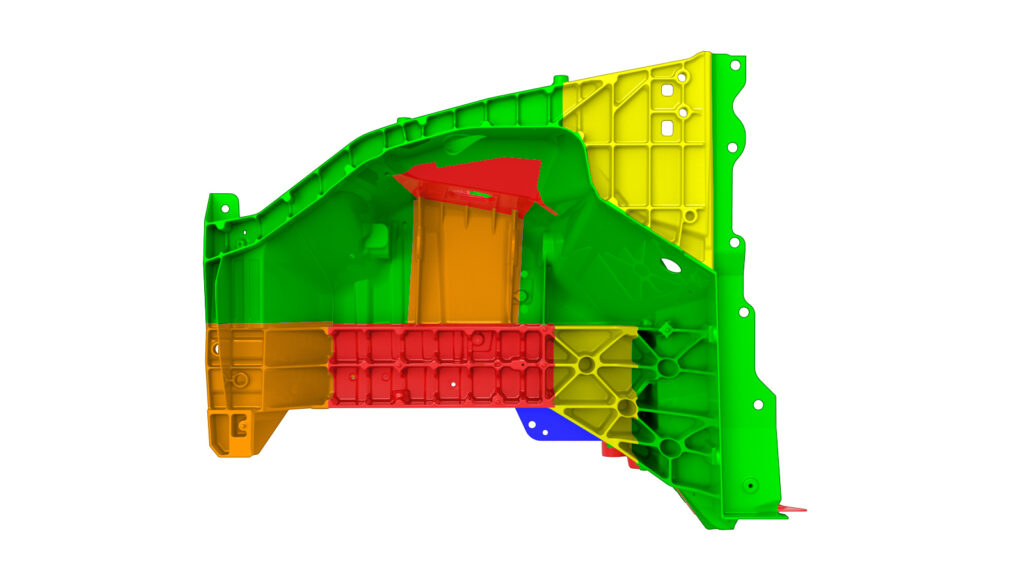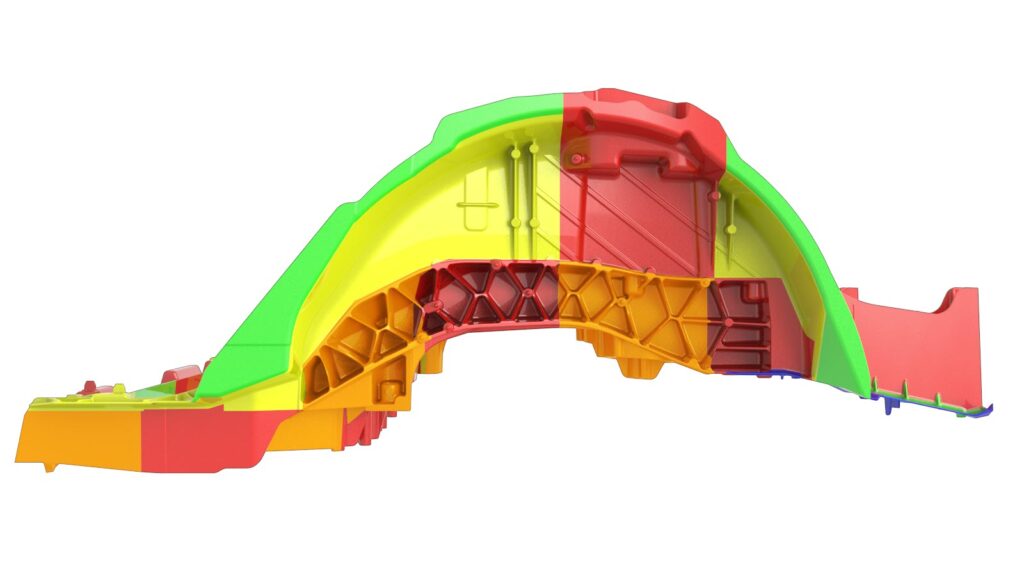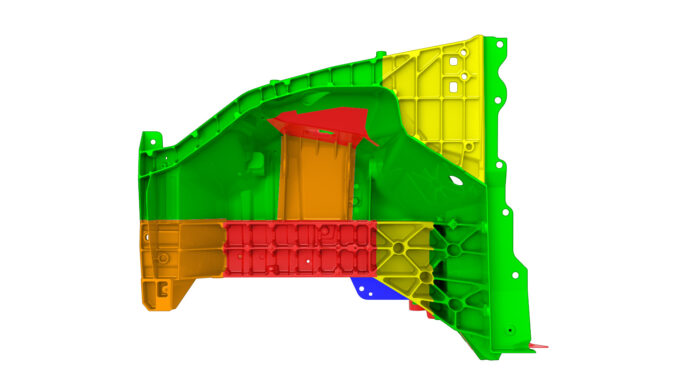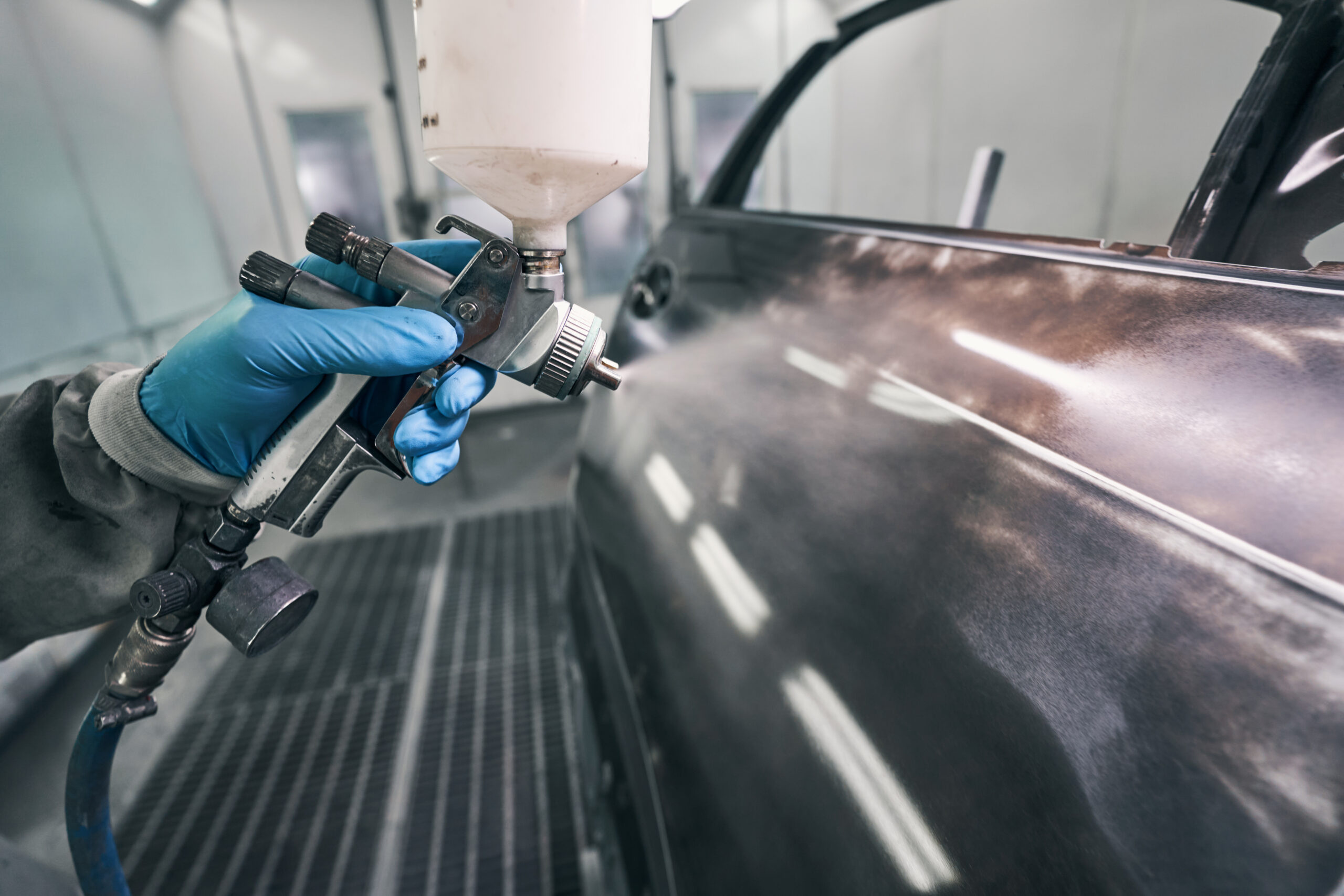The allowable repair process is quite complex. Please refer to the two images of the front and rear modules.
- Blue: No heat can be used, cold straightening of webs is possible, as is welding.
- Green: No heat can be used to straighten, welding up to 50mm is allowable, cold straightening of webs is possible.
- Yellow: No heat can be used to straighten, welding up to 30mm is allowable – or 50mm with the use of a Tesla reinforcement plate, cold straightening of webs is possible.
- Orange: No heat can be used to straighten, welding up to 30mm with the use of a Tesla reinforcement plate is allowable, cold straightening of webs is possible.
- Red: The part is scrap.


Note the number of statements where heat must not be used to re-form or straighten elements of the castings, and the very strict repair limits by zone throughout the component.
Welcome to the future…
While Tesla have for the time being delayed plans for a single cast underbody, this does illustrate the tension that goes on between manufacturing and preservation of asset value during the vehicle’s life (ie, repair). The models cited here are in the main above average price when new, and in time, should reflect that in aged value as other matters such as energy security and better electricity distribution come into effect.
The major challenge is for assessors.
Manufacturers do provide in-depth guidance about what to do if a major structural casting is damaged, but can the typical image-based process capture this before the asset is auctioned or repaired?
Not only are these parts literally buried inside the vehicle, assessing the extend of the damage is tough. More and more manufacturers are adopting larger die castings for the body structure, playing safe in the main with rear modules. These are less likely to be damaged in front or rear end impacts, but may sustain damage in the event the rear subframe is trashed. Then again, such a heavy impact surely means the vehicle has to be broken for spares and the body structure destroyed, ready for material recycling?
The use of large castings in the front-end structure makes total loss of the vehicle more likely, since relatively minor impacts – such as the extremity of the upper longitudinal or the cast part of the chassis leg – could be repairable, but at what cost?
Above all, this shows the value of vehicle specific technical research during the assessment process, and adherence to the processes described by the vehicle manufacturer. Access to the Tesla collision repair and workshop information is free….. an interesting idea for other manufacturers to consider.




